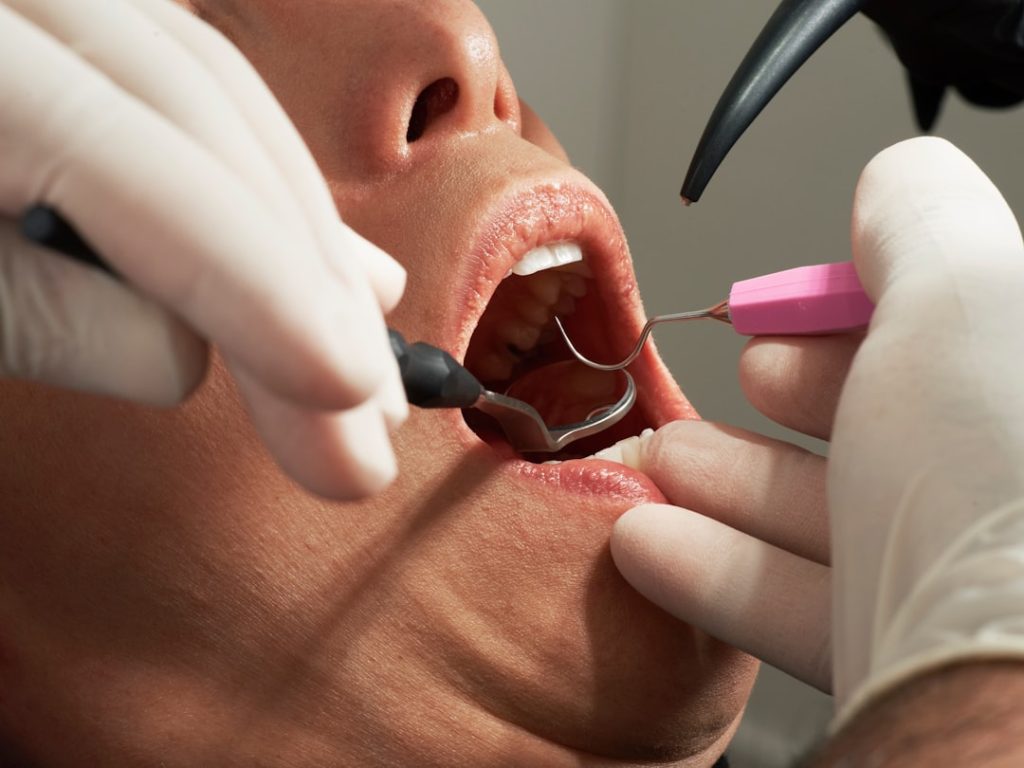In the digital age, a dentist’s website serves as the first point of contact for many potential patients. A professional web design is not merely an aesthetic choice; it is a critical component of a dental practice’s marketing strategy. A well-designed website can significantly influence a patient’s decision to choose one dental practice over another.
It reflects the quality of care that patients can expect and establishes a sense of professionalism and trustworthiness. In an industry where personal recommendations are vital, a polished online presence can enhance a practice’s reputation and attract new clients. Moreover, the dental field is highly competitive, with numerous practices vying for the same patient base.
A professional website can set a practice apart from its competitors by showcasing unique services, advanced technology, and patient-centered care. It can also serve as a platform for educational content, helping to position the dentist as an authority in their field. By investing in professional web design, dentists can create a lasting impression that resonates with potential patients and encourages them to take the next step in their dental care journey.
Key Takeaways
- Professional web design for dentists is important for creating a positive first impression and establishing credibility.
- Creating a user-friendly experience for patients is crucial for retaining and attracting new clients.
- Showcasing expertise and services on the website helps to build trust and attract potential patients.
- Utilizing responsive design for mobile accessibility ensures that the website is accessible to a wider audience.
- Incorporating SEO strategies is essential for improving the website’s visibility and attracting organic traffic.
Creating a User-Friendly Experience for Patients
Intuitive Navigation and Clear Information
A user-friendly website ensures that visitors can easily navigate through various sections without feeling overwhelmed or confused. This involves intuitive navigation menus, clear calls to action, and a logical flow of information. Potential patients should be able to find essential information such as services offered, office hours, and contact details within just a few clicks.
Prioritizing Accessibility
In addition to navigation, the overall design should prioritize accessibility. This includes using legible fonts, appropriate color contrasts, and responsive layouts that adapt to different screen sizes. A user-friendly experience also means optimizing loading times; slow websites can deter users from engaging with the content.
Creating an Inviting Online Environment
By focusing on these elements, dentists can create an inviting online environment that encourages patients to explore their services and ultimately book an appointment. A well-designed website can make all the difference in attracting and retaining patients for a dental practice.
Showcasing Your Expertise and Services
A dentist’s website should serve as a comprehensive showcase of their expertise and the range of services they offer. This can be achieved through detailed service pages that explain each treatment option, including preventive care, cosmetic dentistry, orthodontics, and oral surgery. Each service page should not only describe the procedure but also highlight its benefits and what patients can expect during and after treatment. This level of detail helps demystify dental procedures and can alleviate any anxiety potential patients may have.
In addition to service descriptions, incorporating credentials and professional affiliations can further establish credibility. Dentists should consider including information about their education, training, certifications, and any specialized areas of practice. This not only builds trust but also positions the dentist as an expert in their field.
Furthermore, sharing case studies or success stories can provide tangible evidence of the quality of care provided, reinforcing the practice’s commitment to patient satisfaction.
Utilizing Responsive Design for Mobile Accessibility
With the increasing use of smartphones and tablets for browsing the internet, responsive design has become essential for any professional website, including those for dental practices. A responsive design ensures that a website adapts seamlessly to various screen sizes and devices, providing an optimal viewing experience regardless of how users access it. This is particularly important for dental practices, as many potential patients may search for dental services while on the go.
A mobile-friendly website not only enhances user experience but also positively impacts search engine rankings. Search engines like Google prioritize mobile-optimized sites in their search results, meaning that a responsive design can improve visibility and attract more traffic. Additionally, features such as click-to-call buttons make it easier for users to contact the practice directly from their mobile devices, streamlining the process of scheduling appointments or asking questions.
Incorporating Search Engine Optimization (SEO) Strategies
Search Engine Optimization (SEO) is a crucial aspect of web design that helps dental practices increase their online visibility. By implementing effective SEO strategies, dentists can ensure that their websites rank higher in search engine results pages (SERPs), making it easier for potential patients to find them. This involves keyword research to identify terms that prospective patients are likely to use when searching for dental services in their area.
On-page SEO techniques include optimizing title tags, meta descriptions, and header tags with relevant keywords while ensuring that content remains engaging and informative. Additionally, creating high-quality content such as blog posts about dental health tips or common procedures can attract organic traffic and establish the practice as a valuable resource in the community. Off-page SEO strategies, such as building backlinks from reputable sources or engaging in local SEO practices like claiming Google My Business listings, further enhance online visibility.
Building Trust and Credibility with a Professional Online Presence
Humanizing the Practice
Including elements such as professional photography of the office environment and staff can help humanize the practice and make it more relatable to prospective patients.
Transparency and Trust
Furthermore, transparency is key in establishing trust. Providing clear information about treatment costs, insurance acceptance, and payment options can alleviate concerns that potential patients may have regarding financial commitments.
Demonstrating Expertise and Engagement
Additionally, maintaining an active blog or news section where dentists share insights about industry trends or community involvement can further enhance credibility by demonstrating expertise and engagement with current issues.
Integrating Online Appointment Scheduling and Patient Forms
The integration of online appointment scheduling is a game-changer for dental practices looking to streamline operations and enhance patient convenience. By allowing patients to book appointments directly through the website, practices can reduce administrative burdens while providing a seamless experience for users. This feature not only saves time but also caters to the growing demand for digital solutions in healthcare.
In addition to scheduling appointments, offering downloadable patient forms online can expedite the check-in process. New patients can fill out necessary paperwork before arriving at the office, reducing wait times and improving overall efficiency. This integration not only enhances patient satisfaction but also demonstrates that the practice values their time and strives to provide a modern healthcare experience.
Highlighting Patient Testimonials and Before/After Photos
Patient testimonials are powerful tools for building trust and credibility in any healthcare setting, including dentistry. Featuring positive reviews prominently on the website can significantly influence potential patients’ perceptions of the practice. Testimonials provide social proof that reinforces the quality of care provided and helps alleviate any apprehensions prospective patients may have about seeking treatment.
Before-and-after photos are another effective way to showcase results and demonstrate expertise in cosmetic procedures such as teeth whitening or orthodontics. These visual representations allow potential patients to see tangible outcomes from previous treatments, making them more likely to consider similar services. When displaying testimonials and photos, it is essential to obtain consent from patients and ensure that all representations are authentic and accurately reflect the practice’s capabilities.
Utilizing Social Media Integration for Increased Engagement
Social media platforms have become essential tools for engaging with current and potential patients alike. Integrating social media links into a dental practice’s website allows visitors to connect with the practice on various platforms such as Facebook, Instagram, or Twitter. This connection fosters community engagement and provides an avenue for sharing valuable content related to dental health.
Moreover, social media offers an opportunity for dentists to showcase their personality and approachability beyond clinical settings. Sharing behind-the-scenes glimpses of daily operations or highlighting staff members can humanize the practice and create a welcoming atmosphere for prospective patients. Engaging with followers through interactive content such as polls or Q&A sessions can further enhance relationships with existing patients while attracting new ones.
Ensuring HIPAA Compliance and Patient Privacy
In an era where data breaches are increasingly common, ensuring HIPAA compliance is paramount for dental practices operating online. The Health Insurance Portability and Accountability Act (HIPAA) sets strict guidelines regarding patient privacy and data security in healthcare settings. Dentists must ensure that their websites adhere to these regulations by implementing secure data transmission protocols such as SSL certificates.
Additionally, practices should be transparent about how they handle patient information collected through online forms or appointment scheduling systems. Providing clear privacy policies outlining data usage can help build trust with patients while ensuring compliance with legal requirements. By prioritizing patient privacy on their websites, dentists demonstrate their commitment to safeguarding sensitive information.
Measuring Success with Analytics and Tracking Tools
To gauge the effectiveness of a dental practice’s online presence, utilizing analytics and tracking tools is essential. These tools provide valuable insights into website traffic patterns, user behavior, and conversion rates—information that can inform future marketing strategies and web design improvements. For instance, Google Analytics allows practices to monitor which pages receive the most traffic, how long visitors stay on the site, and where they are coming from.
By analyzing this data, dentists can identify areas for improvement or optimization within their websites. For example, if certain service pages are underperforming in terms of traffic or engagement, it may indicate a need for enhanced content or better SEO strategies. Regularly reviewing analytics helps practices stay attuned to patient needs and preferences while ensuring that their online presence remains effective in attracting new clients.
If you are interested in learning more about web design for dentists, you may want to check out this article on uprankerz.com. This article provides valuable insights and tips on how to create an effective website for dental practices. It covers topics such as user experience, mobile responsiveness, and search engine optimization. By following the advice in this article, dentists can attract more patients and grow their practice online.
FAQs
What is web design for dentists?
Web design for dentists refers to the process of creating and designing a website specifically tailored to the needs and requirements of dental practices. This includes incorporating features such as appointment scheduling, patient education resources, and information about the services offered.
Why is web design important for dentists?
Web design is important for dentists as it serves as a digital storefront for their practice. A well-designed website can help attract new patients, provide valuable information to existing patients, and establish credibility and trust within the community.
What are some key features of a dental web design?
Key features of a dental web design include a user-friendly interface, mobile responsiveness, search engine optimization (SEO) to improve visibility in online searches, online appointment scheduling, patient testimonials, and educational resources about dental procedures and oral health.
How can a well-designed website benefit a dental practice?
A well-designed website can benefit a dental practice by increasing visibility and attracting new patients, improving patient engagement and satisfaction, streamlining appointment scheduling and communication, and establishing the practice as a reputable and trustworthy healthcare provider.
What are some best practices for web design for dentists?
Best practices for web design for dentists include creating a clean and professional design, optimizing for mobile devices, incorporating high-quality images and graphics, providing clear and concise information about services and procedures, and ensuring easy navigation for visitors.


